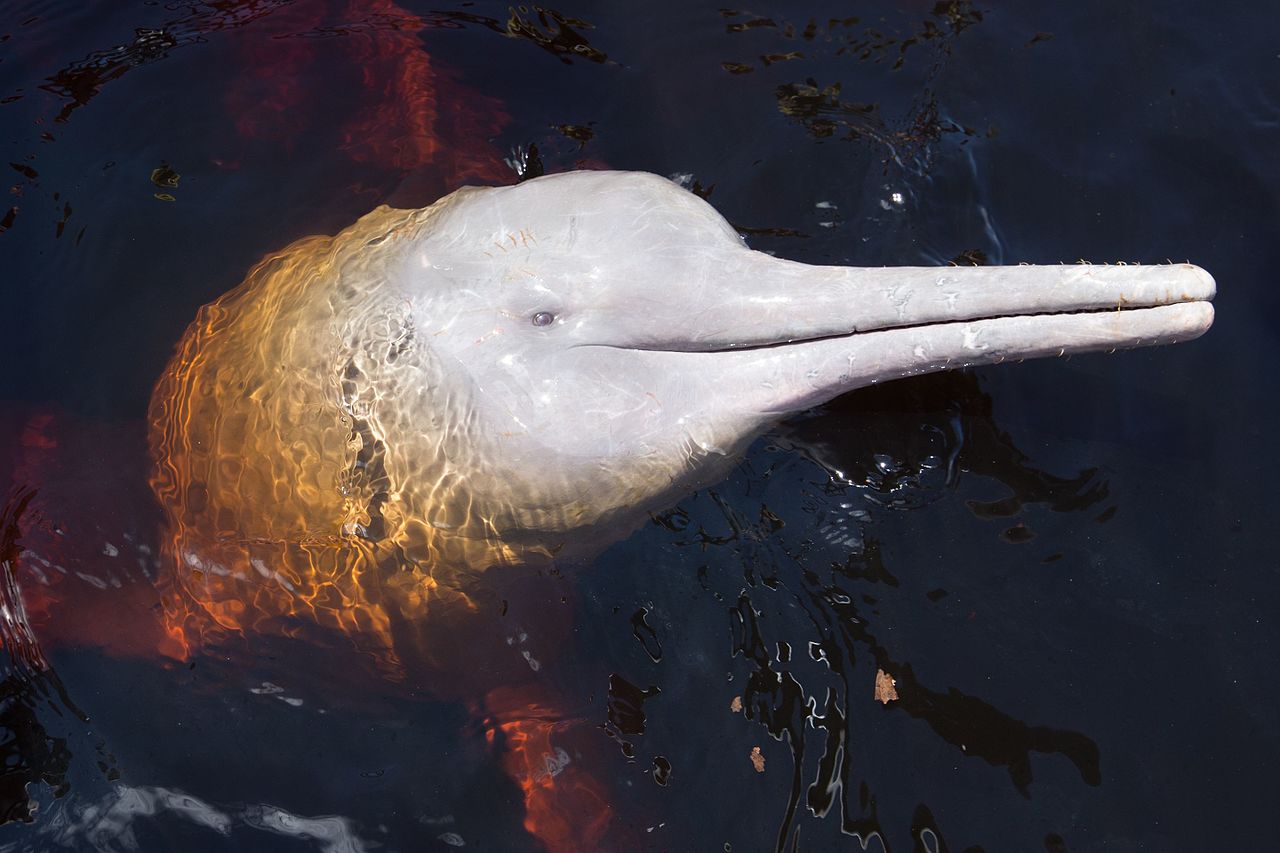

The teeth are visible in both the upper and lower jaws even when the mouth is closed. The Indus dolphin has the long, pointed nose characteristic of all river dolphins. A possible explanation is that several north Indian rivers such as the Sutlej and Yamuna changed their channels in ancient times while retaining their dolphin populations. The river dolphins are unlikely to have travelled from one river to another through the sea route, since the two estuaries are very far apart. Since the two originally inhabited river systems – between the Sukkur and Guddu barrage in Pakistan's Sindh Province, and in the Punjab and Khyber Pakhtunkhwa Provinces – are not connected in any way, how they were colonized remains unknown. Today this species can only be found in the Indus River's main stem, along with a remnant population in the Beas River. This dolphin prefers a freshwater habitat with a water depth greater than 1 meter and that have more than 700 meters squared of cross-sectional area. It no longer exists throughout the tributaries, and its home range is only 690 km of the river. Its effective range today has declined by 80% since 1870. But today, its only found in one fifth of this previous range.

These dolphins occupied about 3,400 km of the Indus River and the tributaries attached to it in the past. The Indus river dolphin presently only occurs in the Indus River system. Alternative names for the Indus River Dolphin include the Indus blind dolphin, side-swimming dolphin, and bhulan. However, more recent studies of genes, divergence time, and skull structure support both being distinct species. However, in the 1990s, both species were again grouped as a single species. This species and the Indus river dolphin, were initially classified as a single species, Platanista gangetica, but in the 1970s both were split into distinct species. The Ganges river dolphin split from the Indus river dolphin during the Pleistocene, around 550,000 years ago. From the collection of The Children's Museum of Indianapolis. The long jaws and deep brain pan of the Indus river dolphin are visible from this skull cast.


 0 kommentar(er)
0 kommentar(er)
